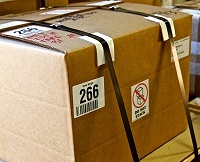| One of the conditions in which 17-7 is furnished is the annealed condition, Condition A. In this condition, the material possesses an austenitic structure. As an austenitic material, the 17-7 alloy possesses a relatively low strength. This is the condition in which formability is easiest.
To develop the high precipitation hardened strength of the alloy by heat treatment, starting from Condition A, heat treatments are done to accomplish two necessary steps. The first is a heat treatment which alloys the relatively stable austenite of Condition A to transform to martensite (Austenite Conditioning and Transformation). The second is a precipitation hardening heat treatment to further strengthen the material. The austenite is easier to transform to martensite using a lower temperature heat treatment. For this reason, Condition TH 1050 uses a 1400° F (760° C) heat treatment to produce a martensite transformation around room temperature, and this is followed by a precipitation hardening heat treatment at 1050° F (565° C). If Condition RH 950 is desired, the austenite conditioning heat treatment is conducted at 1750° F (955° C). In this case, the martensite transformation is not complete until the material is held for some time at –100° F (-73° C). When transformation is complete, the material is precipitation hardened at 950° F (510° C) to Condition RH 950.
Because the precipitation hardening reaction can be driven past peak strength by high temperature or excessive time at the aging temperature, higher temperature or longer time precipitation hardening heat treatments produce lower strength levels.
When 17-7 with an austenitic structure is cold worked by substantial deformation, a transformation to martensitic structure results from the deformation. In this condition, Condition C, the material may be precipitation hardened directly by heat treatment at 900° F (482° C) to Condition CH 900.
|











